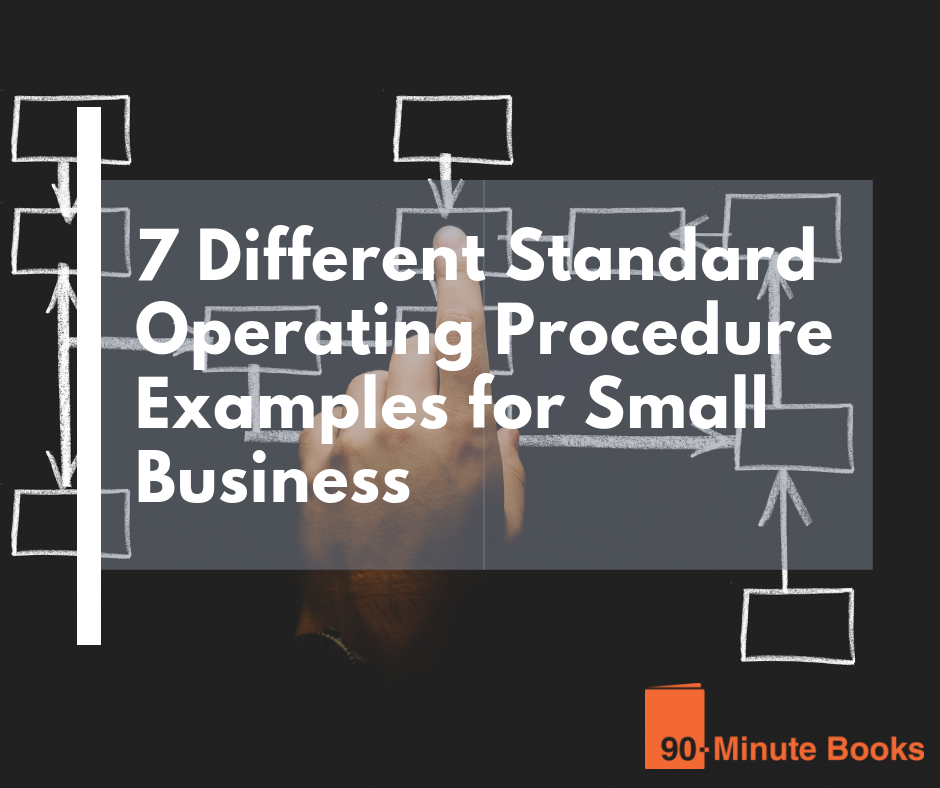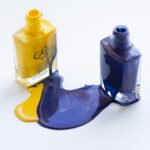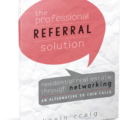Today, we want to discuss a current advertising practice that you might have heard of, known as reactive marketing.
Reactive marketing isn’t a brand-new concept; it’s been a successful trend for quite some time. All content teams should find ways to utilize it regularly. This is the exact opposite of proactive marketing, where instead of foreseeing alterations on the part of customers, you react to them rapidly.
This post will give you knowledge about reactive marketing and also provide you with tricks to incorporate it into your marketing choices.
Best Advertising Campaigns Of All Time
1. Old Spice Commercial – The Man Your Man Could Smell Like
Year: 2010
Media: Television and Internet
This Old Spice commercial was a huge success on social media!
Before airing its commercial during the Super Bowl, Old Spice was the brand that sold deodorant to your grandfather. With market share dwindling, the brand needed a pick-me-up. They opted to create product promotion efforts geared towards a more youthful demographic.
In 2010, an advertisement for Old Spice involving an attractive man began with the intention of engaging with a female demographic. He said that if their person employed Old Spice, they could have a scent like him.
Why was he addressing women?
The creative group investigated and discovered that female shoppers buy about 70% of all toiletry items for men.
That’s not all.
The Old Spice advertisement encouraged interactive dialogue with customers on the internet and resulted in 186 customized videos on social media websites. People would submit queries to Old Spice, and the spokesperson for the brand himself would respond.
That’s one hell of an engagement strategy.
Why is the Old Spice commercial so successful?
Advertisements drew in people of a younger age group with content that resonated with them – funny and risqué messages. The advertisements were highly attractive to youths of both genders, the two most important target groups for the Old Spice Company. Same as the male model who was the face of the marketing campaign.
The ease of sharing content on social media generated people to support the brand, leading to the advertisement taking off and becoming widely known. This allowed the company to begin a dialogue with its followers.
Naturally, this created engagement that was off the charts!
Old Spice commercial: Results
Within a month of commencing their campaign, Old Spice earned more than 40 million views on YouTube and a rise of 107% in body wash sales. Old Spice became the top company of male body washes and antiperspirants in America.
Procter & Gamble later reported that the campaign generated:
- almost 105 million YouTube views
- a 2700% increase in Twitter followers
- an 800% increase in Facebook fan interaction
- and a 300% increase in traffic to the Old Spice Website
A tremendous increase in Social Media involvement enabled Old Spice to break into the market emphatically with an individual advertisement effort.
2. Nike Campaign – Just Do It
Year: 1987
Media: Print, Television, Internet
To attract more people, the company launched its very first major promotion of Nike in 1987. For their first promotional strategy, they made a collection of TV ads focused on females, kids, and people who don’t do sports.
The day before the presentation of the Nike campaign from the creative agency, the team inserted the iconic phrase “Just Do It”. Creatives and Nike both inquired about the slogan before being tested in the advertisement.
Nobody felt that using the slogan was essential or would make any kind of impression, much less turn out to be representative of the company.
For more than 3 decades, staying true to its fundamental purpose has been an integral part of Nike’s ethos and its “Just Do It” advertising campaign has gone down in history as one of the greatest.
Why is Nike on the best advertising campaigns list?
The uplifting motto was felt heavily by both athletes and individuals with little to no involvement in athletics.
This indicated a move forward for Nike to be more accepting in athletics – an important goal intended to be shown in the promotion. The slogan had remarkable power: it could inspire and motivate people everywhere, was able to be encapsulated in a few words, and everyone could relate to it.
Many people found “Just Do It” was more than a popular ad from the 1980s; it served as an expression to live by.
Nike Campaign: Results
Before the introduction of the “Just Do It” advertising campaign, Nike’s intended demographic was largely limited to male athletes playing in competitive sporting events. The effort was focused on altering that situation, featuring adverts for products linked to strolling, multi-exercise, basketball, and female health.
Before unveiling its “Just Do It” slogan, Nike was having difficulty broadening their customer base and was considered a specialized brand. Following the campaign, Nike became a premiere sports brand. Nike reported a ten-fold increase in sales over a ten-year period.

FREE BOOK
Discover the 5 Compelling Book Titles Types that create an ‘I Want That…’ response.
3. Dove’s Awareness Campaigns – Real Beauty
Year: 2004
Media: Television, Print, Experiments
Unilever, the originator of Dove, were among the initial few businesses to incorporate sustainability into their organizational practice. It’s understandable why the company aimed to boost the confidence of women all around the globe by launching awareness programs.
Dove’s Real Beauty movement responded to the research revealing that only two percent of women thought of themselves as attractive.
The marketing initiative encompassed more than just printed promotions and television advertisements. Dove tried a new approach, erecting billboards labeled ‘Tick-Box’ that attracted 1.5 million people to the campaign website. Over 50 million individuals had seen the Real Beauty Sketches video within the first two weeks of its release.
These experiments generated much discussion among the public and promoted an empowering message for female individuals.
Why are Dove’s Awareness Campaigns on the best ads list?
The Real Beauty ad campaign was remarkable in that it managed to spark dialogue between its intended demographic.
This educational initiative went against mainstream beauty standards. Dove included ‘real women’ in their ads alongside provocative statements. This cemented the company’s status as a leader in terms of beauty equality.
Dove’s Awareness Campaigns: Results
During the first decade of its campaign, Dove saw a rise in sales from $2.5 billion to $4 billion. After the promotion, Dove became the leading favored soap company in the United States.
The brand not only obtained financial prosperity but also had a positive effect on society, which was uncharacteristic of the advertising efforts during that period. This earned Dove invaluable customer loyalty as a result.
4. Absolut Vodka’s Best Advertising Campaign – The Absolut Bottle
Year: 1980
Media: Print
The bottle became a star.
This promotion is the most extended continuous advertisement effort in history, lasting 25 years and having over 1,500 different commercials.
In 1979 the Swedish vodka manufacturer went international. The company was competing with multiple Russian businesses that had a monopolizing presence in the US vodka business at the time.
Absolut had no advertising, and its bottle was plain. They had to be different from rival companies with more money and well-known brands.
When several companies took advantage of consumer thought processes by employing Russian-sounding titles, Absolut took a distinctive direction. They presented themselves as a fashionable and modern label of excellent quality.
Why does Absolut make the list of Best Advertising Campaigns?
Absolut put in additional effort to ensure it was not compared to other competing companies. They placed emphasis on promoting a product that seemed special and exclusive.
Absolut gave shoppers a completely novel journey by providing items they had not previously known they desired.
The advertisement campaign blended visual and audible jokes in conjunction with eye-catching illustrations proficiently.
Absolut Vodka Best Advertising Campaigns: Results
At the start of the marketing campaign, Absolut’s portion of the US market was just 2.5%. When the campaign concluded in the middle of the 2000s, their market share had increased to half of the total.
From 1980 to 2000, sales skyrocketed from 10,000 cases to 4.5 million!
What Is Reactive Marketing?
What primary query should we consider regarding this type of content marketing?
A marketing approach that requires a reaction to customers, cost fluctuations, media, occurrences and other external forces. Rather than creating something totally novel and predicting what the customers will hope for in the times ahead, reactive digital marketing involves handling alterations that are taking place presently – and how the brand should react accordingly.
The great thing about reactive marketing? It just makes sense. If a company really wants to understand the needs of its customers, they need to do more than just attempt to prevent issues before they arise. They should simultaneously provide a prompt answer to both the positive and negative aspects to interact with customers at the same level.
Regarding trending hashtags and big events on the global news agenda, your marketing team needs to react immediately. Act quickly for your marketing message to be impactful and pertinent.
Let me illustrate the potential of strategic reactive marketing by going through some of the most successful reactive marketing ads from the past 10 years. These advertisements earned much recognition and showcased astonishingly inventive reactive marketing.
Responding To News Quickly
As previously mentioned, responding promptly is vital for successful reactive marketing.
Does anyone recall when during the 2013 Superbowl, there was a blackout in the Superdome? Folks were mad, cross, and restless – however, Oreo was ready to take an irksome power cut and turn it into promotional sorcery.
The cookie company promptly created an intriguing catchphrase proclaiming, “you can still dunk in the dark”. This resonated with viewers owing to its promptness and applicability to the game unfolding before them. Oreo truly couldn’t have gotten the timing better.
Now let’s discuss an up-to-date advertisement that was incredibly amusing. Most people probably witnessed when Tesla brought out their new Cybertruck in 2019, only to suffer a shattered window during their broadcast while it had passed many trials before this. The “shatterproof” window became a popular source of amusement online, and Lego took advantage of this.
The well-known toy company not only made a replica of the Cybertruck out of their own pieces but also jokingly claimed that it was ‘certainly break-resistant, taking a light-hearted shot at the failed demonstration and appealing to an extensive group of Tesla enthusiasts and detractors.
Obviously, the Lego advertisement was referring to current technology news, yet its impact would have been weakened if the promotion had been released later on. This review must be done promptly and effectively, or you risk forfeiting your advantage.
Play-Off of Social Media And Entertainment
The following illustrations come from the rulers of digital brand interactions and witty responses. It is quite apparent that online platforms like Twitter, Facebook, and Instagram are an excellent path for businesses to grab consumer attention and create an identity for themselves, which these corporations have mastered.
Because people are dedicating approximately two and a half hours per day to social media, it is plain to see that advertisers can no longer solely depend on traditional tactics such as billboards, television ads and print media.
Have you considered the content that goes beyond the ads you post on social media platforms when thinking about the potential of marketing in the future?
Keep. It. Brief.
Be concise when engaging in reactive marketing; brevity is key to wit and creating effective ads.
Reactive marketing tactics don’t generally require more than a brief phrase and a compelling subject to be effective, even though a lengthy piece of marketing material has its place and purpose.
An approach to marketing based on current topics, fads, and conversations uses less extended content and more up-to-date information. Do not be scared to give some space for the reader to form their own opinion.
Give It A Little Emotion
The last group of examples we are looking at are from some businesses that were able to effectively draw on feelings when discussing catastrophes.
Supporters worldwide united on the internet to express their sadness at the loss of Carrie Fisher in 2016. But individuals were not the only ones to speak out – companies also joined in, and some used her demise to generate respect in their promotional efforts.
Cinnabon gained notoriety with their homage to Carrie Fisher, turning her princess Leia’s buns into a few of their own buns. The ad was perfectly on time, handled with real deference, and crafted beautifully – making people recognize and appreciate the dedication.
Figuring out the right response to an unfortunate or distressing current event is tricky because businesses must be careful not to be insincere or discourteous. Cinnabon did a fantastic job; however, it can be difficult for brands to maneuver this route.
Talk about reacting to something huge and important. These companies demonstrated how a marketing effort can be impressively affecting when executed appropriately and with the suitable acknowledgment of worldwide calamities.
The Key Takeaways:
- Be timely. Timing is everything, whether you’re responding to a news story or a social media trend. Consider turning on news alerts so that you can be the first to respond to big events with wit, respect, and expert marketing strategies.
- Embrace the seasons. Holidays and yearly events provide excellent opportunities for reactive marketing. Pay attention to what’s coming up on the calendar and what you’ll need to respond to in the near future.
- Always understand your marketing angle. Reacting to something for the sake of reacting doesn’t work. To yield strong results, your marketing efforts need to stick to your guidelines and serve a larger purpose on behalf of your brand.
- Think about the value of the reaction. Are you really telling a story or chiming in on something meaningful? What will viewers take from your message? Make sure that your value is unique and powerful.
- Reactive marketing can be incredibly successful when done right. It helps you stay on top of current events and find new marketing opportunities regularly – plus, it’s usually cost-effective since so much of it can be done through simple social media marketing.
Guest Post Disclaimer
The views expressed in this post do not represent the views of 90-Minute Books. The information has not been verified and should be considered an opinion. You are always advised to do independent research.











